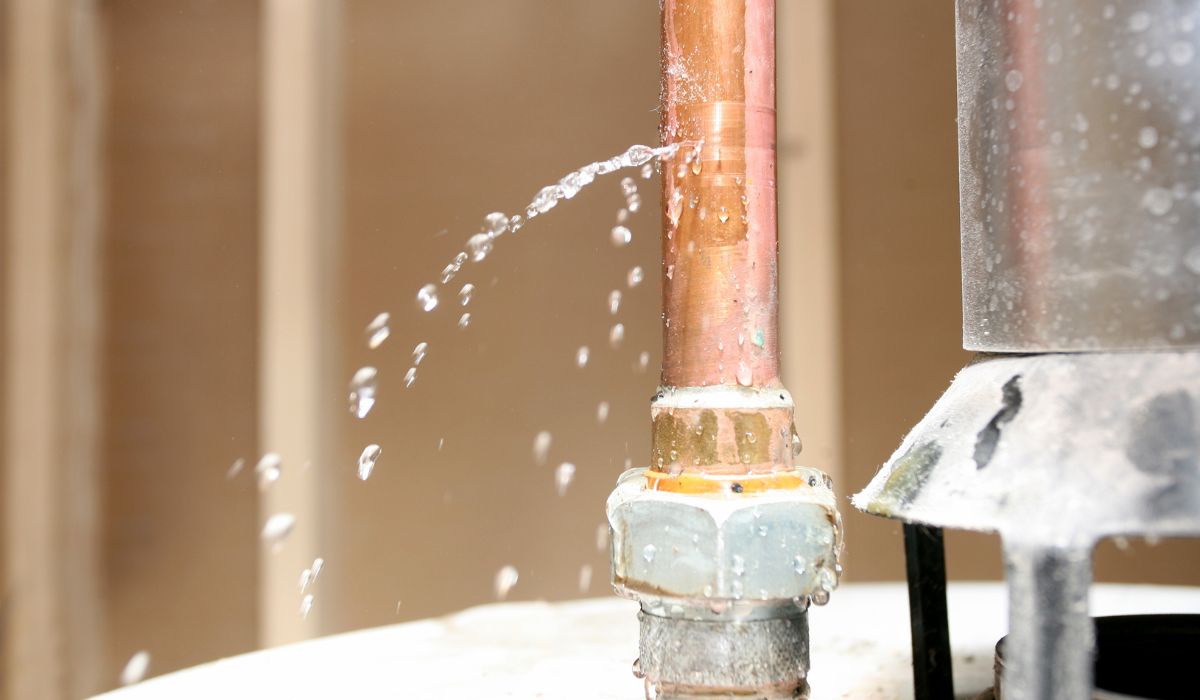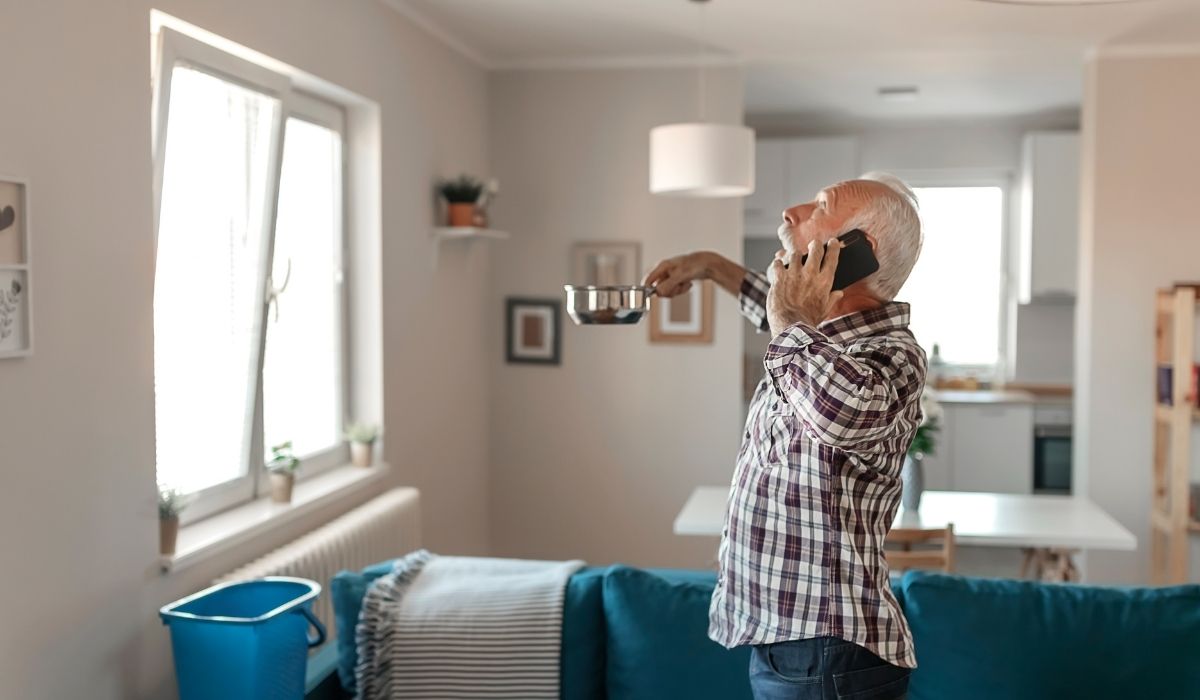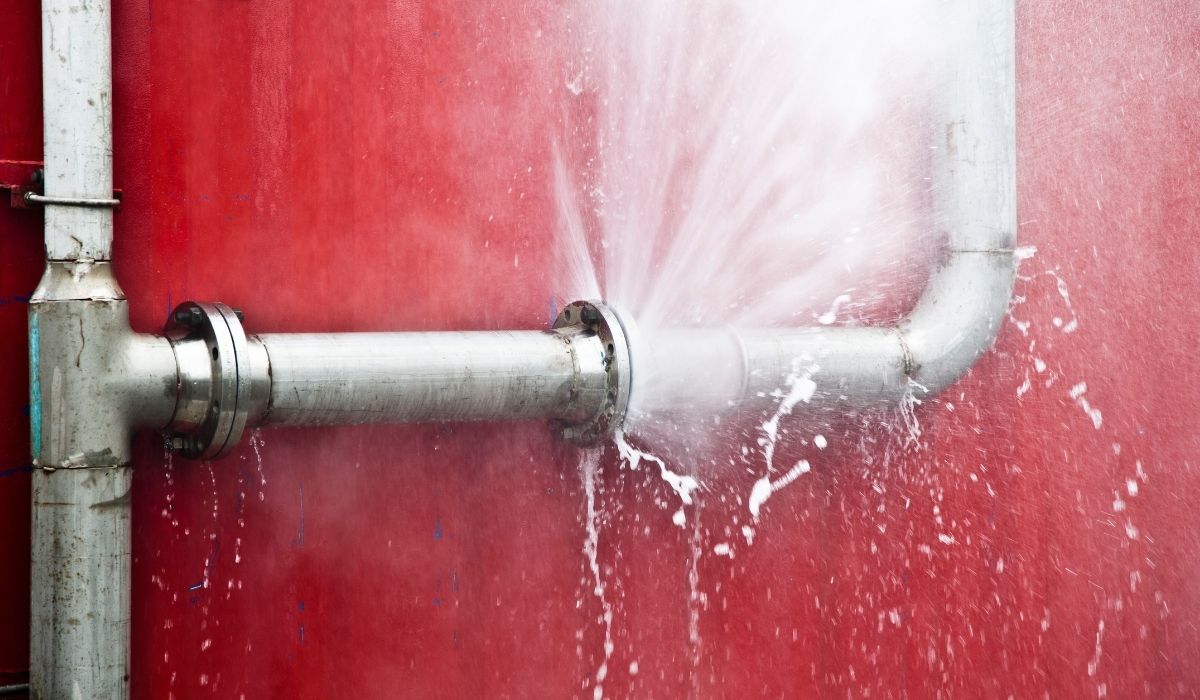Top 5 Causes of Home Water Damage
Water damage can happen in any home, old or new. A small leak today can turn into big property damage tomorrow. Water can ruin drywall, warp floors, weaken your foundation, and create indoor mold that hurts indoor air quality and your health.
In this guide, we will talk about the top 5 causes of water damage in residential properties and how to prevent them. We’ll also share when to call water damage restoration services and how insurance can help.

Cause #1: Plumbing Leaks and Broken Pipes
How Plumbing Problems Cause Water Damage
Your home has many plumbing lines that bring clean water supply to the sink, toilet, bathroom, washing machine, dishwasher, and refrigerator. These lines and each pipe, valve, and pressure regulator must all work together.
When something goes wrong, you can get:
- Leaks under the sink or behind walls
- A burst pipe from high water pressure
- Corrosion and rust on old pipes
- Loose fittings that spray water inside walls or ceilings
Over time, even a tiny leak can soak drywall, ceiling areas, and floors, leading to moisture, mold, and serious property damage.
Signs You May Have a Plumbing Leak
- You hear water running but no tap is on
- Soft spots or stains on drywall or ceiling
- Wet, warm, or cold spots on floors
- A sudden jump in your water bill
- Musty smell from indoor mold or hidden moisture
How to Prevent Plumbing Water Damage
- Get regular inspection of pipes, valves, and pressure regulator
- Fix any leak right away
- Watch your water pressure; too much pressure can break pipes
- Insulate pipes from heat and ice to avoid cracking
- Call a licensed plumber for repair if you see rust or corrosion
When plumbing problems cause damage, you may need water extraction, water damage repair, and mold remediation from a professional restoration company.
Cause #2: Appliances and HVAC Systems
Washing Machines, Dishwashers, and Refrigerators
Home appliances move a lot of water. If something fails, your home can flood fast.
Common trouble spots:
- Washing machine hoses that crack or come loose during washing
- Dishwasher leaks from bad seals or clogged drains
- Refrigerator water lines or ice maker leaks that drip slowly
Water can run under cabinets, into walls, and down into the basement or attic below, leading to indoor mold and contamination.
Air Conditioning and Duct Systems
Your air conditioning removes moisture from the air. The water should go out through a drainage line and duct or pan. When that line is clogged, the pan can overflow and soak the ceiling, drywall, and insulation.
Good ventilation and clean drains help keep indoor air quality safe and prevent mold.
How to Prevent Appliance Water Damage
- Check hoses on washing machines and dishwashers at least once a year
- Replace rubber hoses with braided metal when you can
- Make sure refrigerator and ice maker lines are tight and not leaking
- Clean clogged drains and AC drainage lines
- If you see moisture or stains, schedule an inspection and fix the issue quickly
Cause #3: Roof Leaks, Gutters, and Storm Water
Roof Leaks and Flashing Problems
Your roof is your first shield against rain, hail, wind, and storm damage. Missing shingles, bad flashing, or small gaps can let water in. Over time, this can damage:
- The attic and insulation
- The ceiling and drywall
- Wooden beams and framing
Water that sneaks in during storms can lead to indoor mold, smells like smoke or must, and major property damage.
Gutters, Drains, and Debris
Gutters and downspouts move water away from your home. When they are full of debris or clogged, water pours over the side and can:
- Soak the soil around your foundation
- Flood the basement
- Create clogged drains around walkways and drives
This trapped water can leak into your home and damage drywall, floors, and basement walls.
How to Prevent Roof and Gutter Water Damage
- Clean gutters and downspouts at least twice a year
- Remove debris like leaves and branches after a storm
- Check flashing around chimneys, vents, and skylights
- Look for stains or sagging spots on the ceiling
- After big hail, wind, or tornado events, schedule a roof inspection
Cause #4: Basements, Foundations, and Poor Waterproofing
Basement Flooding and Sump Pumps
Many homes have a basement or crawl space. Water can get in from:
- Heavy rain causing flood conditions
- Rising groundwater soaking the soil
- Cracks in the foundation walls
- Poor basement waterproofing and weak drainage
A sump pump and backup pump help keep water out. But if the pump fails or has no power during a natural disaster or emergency, water can rush in and cause serious water damage.
Foundation Cracks and Drainage Problems
If water sits around your home, it can:
- Push against foundation walls
- Leak into lower levels
- Cause soil movement and property damage
How to Prevent Basement and Foundation Water Damage
- Add or improve basement waterproofing around your home
- Make sure the drainage slopes away from the foundation
- Keep gutters and drains clear
- Test your sump pump regularly
- Install a backup pump system if you can
Cause #5: Natural Disasters and Sewage Backups
Floods, Storms, and Natural Disasters
Big weather events and natural disaster risks, like:
- Flood
- Hail and strong wind
- Tornado
- Heavy rain and storm surges
can overwhelm drains, sewage systems, and city water supply. Water may rise quickly and come into your property, carrying contamination, mud, and chemicals.
If you live in a high-risk zone, flood insurance and good property insurance or home insurance are very important. Check your insurance policy so you know what is covered.
Sewage Backups
A sewage backup happens when waste water from toilets, sinks, and tubs flows back into your home. This is very serious because it brings germs and contamination.
Backups can be caused by:
- Tree roots in city lines
- Clogged pipes
- Heavy rain and storm overload
- Broken valve or damaged main pipe
In this case, you need emergency restoration services, water extraction, and careful cleaning to keep your family safe.
Health and Safety Risks of Water Damage
Water damage is not only about the building. It also affects your health, fire safety, and air.
- Mold and indoor mold grow in moisture and can harm indoor air quality
- Wet wiring and water around outlets raise risk of shock or fire damage
- Damaged insulation and smoke or musty odors can make breathing hard
Good ventilation, quick drying, and mold remediation help keep your home safe.
What To Do After Water Damage
Step 1: Stay Safe
- Turn off power if water is near outlets (follow fire safety rules)
- Do not walk in deep water where you can’t see the floor
- Keep kids and pets away from damaged areas
Step 2: Call Professionals
You may need:
- Licensed water damage restoration or damage restoration company
- Professional restoration services for fire damage plus water
- Water extraction, drying, and water damage repair
- Mold remediation if there is indoor mold
These services use tools to remove moisture, dry drywall, and clean contamination so your property is safe again.
Step 3: Contact Your Insurance Company
Call your insurance company right away to start an insurance claim.
- Ask what property insurance and home insurance cover
- Check if you also have flood insurance
- Take photos of the property damage
- Save receipts for every repair and restoration service
Your insurance or insurance policy may help pay to repair or rebuild your property after water damage.
How to Prevent Water Damage in Your Home
You cannot control every storm or natural disaster, but you can lower the risk.
- Keep gutters, drains, and clogged drains clear of debris
- Watch for leaks around sink, toilet, bathroom, and appliances
- Check the roof, flashing, and attic regularly
- Maintain basement waterproofing and drainage
- Manage water pressure with a pressure regulator
- Get an annual inspection of your plumbing, roof, and foundation
Smart care now can prevent costly water damage later.

FAQs About the Top Causes of Water Damage
What is the most common cause of water damage in homes?
The most common cause is usually plumbing problems, like a leak or burst pipe. Old pipes, high water pressure, and corrosion can all cause sudden water damage that soaks drywall, floors, and ceilings.
Can appliances really cause serious water damage?
Yes. A broken washing machine hose, leaky dishwasher, or refrigerator line can spill a lot of water in a short time. If the water reaches walls, attic, or basement, you may need water damage restoration and water damage repair.
How do storms and natural disasters cause water damage?
Heavy rain, hail, wind, tornado, and other natural disaster events can damage your roof, flashing, and gutters. This lets water into your property and can also cause flood or sewage backups that bring contamination and serious property damage.
Does insurance cover water damage in my home?
It depends on your insurance policy. Home insurance or property insurance may cover some sudden water damage, while flood insurance is often needed for flood events. Always read your policy and call your insurance company to file a claim or insurance claim after an emergency.
When should I call a water damage restoration company?
Call a restoration or water damage restoration company anytime you see major water damage, moisture in walls, indoor mold, or sewage. They can do water extraction, drying, mold remediation, and repair to protect your property and your family’s health and indoor air quality.
By learning the top 5 causes of water damage in residential properties and taking action early, you can protect your home, your health, and your wallet. If you ever feel unsure, call a trusted local restoration professional to help keep your home safe and dry.



